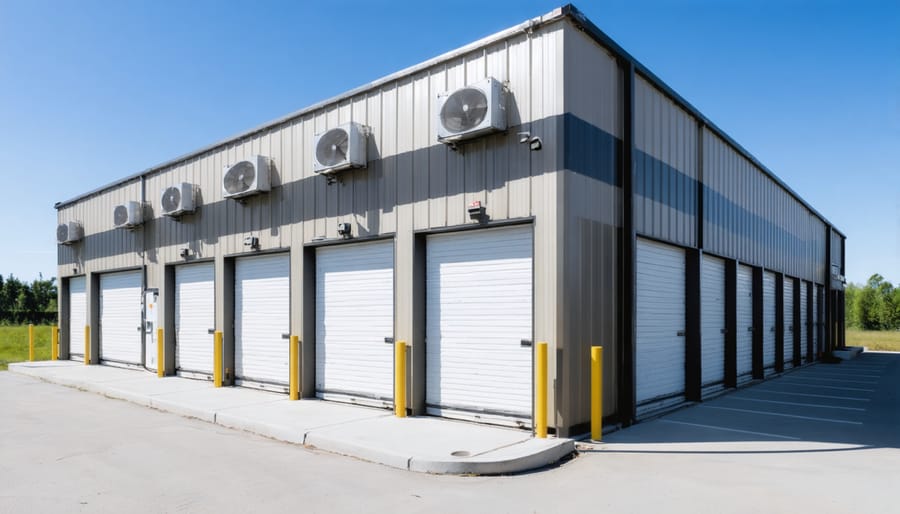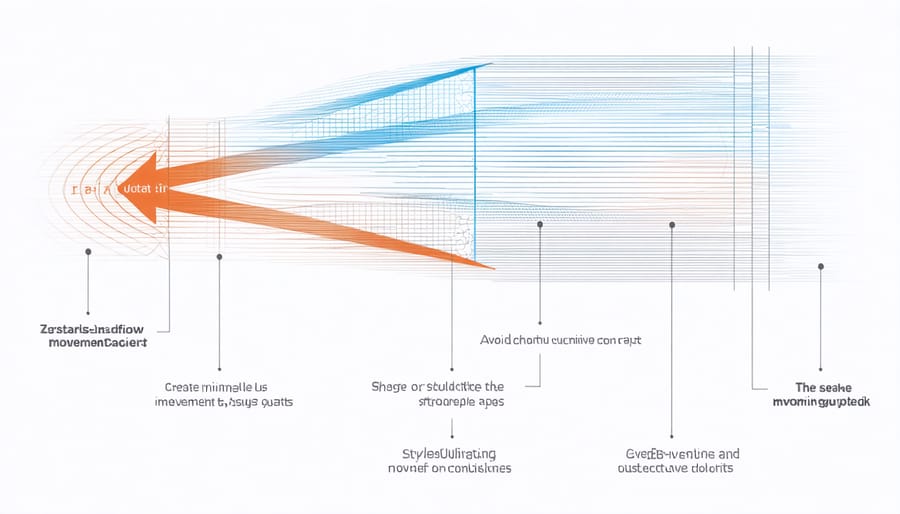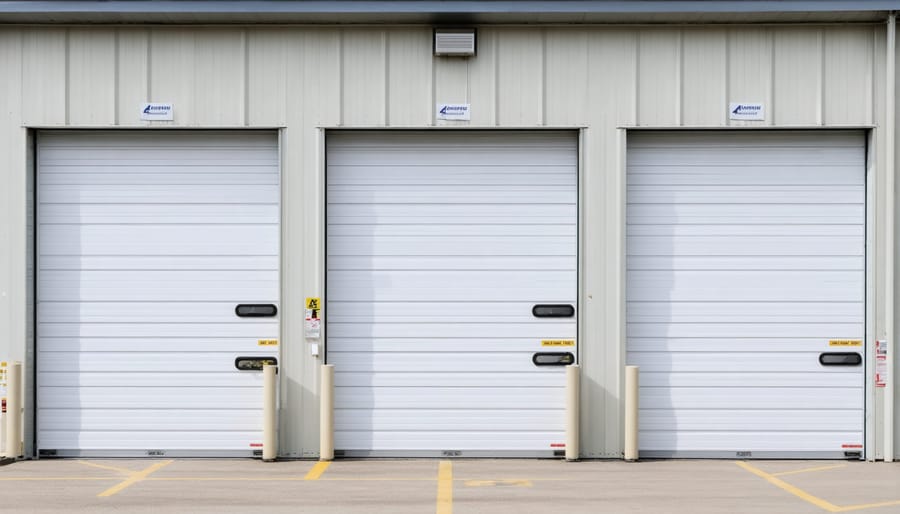Smart Z-Ventilation: Keep Your Storage Perfect in Any Weather

Transform your storage space with z-ventilation, the innovative airflow system that helps protect your belongings in any weather. Install strategically placed intake vents at ground level and exhaust vents near the roof peak to create a natural chimney effect, maximizing air circulation while minimizing moisture buildup. Position your storage unit to capitalize on prevailing winds, ensuring optimal cross-ventilation throughout changing seasons. Add adjustable vent covers to control airflow during extreme weather conditions, maintaining ideal humidity levels year-round.
This proven ventilation method prevents condensation, mold growth, and material degradation while requiring minimal maintenance. Whether storing sensitive electronics, valuable furniture, or seasonal equipment, z-ventilation delivers consistent temperature control and moisture management through passive airflow engineering. Modern z-ventilation solutions combine time-tested principles with contemporary materials, offering practical, energy-efficient protection for your stored items.
Why Z-Ventilation is Your Storage’s Best Friend
The Science Behind Z-Ventilation
Z-ventilation works by creating a natural flow of air through your storage space, mimicking the way wind moves through nature. Think of it as creating a gentle breeze that flows in a “Z” pattern from the bottom to the top of your structure. Cool air enters through lower vents, warming as it rises and naturally drawing out hot, humid air through upper vents positioned on the opposite side.
This ingenious design takes advantage of basic physics – warm air naturally rises while cool air sinks. When properly installed, these vents create a continuous cycle of air movement that helps regulate temperature and moisture levels without any mechanical assistance. The diagonal flow pattern ensures that air reaches all corners of your space, preventing stagnant spots where moisture could accumulate.
As the air circulates, it helps maintain a consistent environment that protects your stored items while requiring no electricity or ongoing maintenance.

Temperature and Humidity Control
Z-ventilation systems play a crucial role in maintaining optimal temperature control for storage spaces by creating a natural airflow pattern that effectively manages both heat and moisture. This innovative design works by allowing warm air to rise and escape through strategically placed vents while drawing in cooler, drier air from below. During summer months, this continuous air movement prevents heat buildup that could damage sensitive items, while in winter, it reduces condensation that might lead to mold growth.
The system’s effectiveness comes from its ability to maintain consistent air circulation without requiring electricity. By positioning intake vents near the floor and exhaust vents along the roof line, z-ventilation creates a chimney effect that works year-round. This natural approach not only protects your stored items but also helps extend the life of your storage structure by preventing moisture-related issues like wood rot and rust.
Setting Up Z-Ventilation in Your Storage Space
Placement and Installation Tips
Getting your z-ventilation placement right is crucial for optimal airflow. Start by measuring your space and marking potential vent locations on both ends of your storage area. For most installations, position vents at the highest points possible, as warm air naturally rises and needs an escape route.
Begin installation by marking your vent locations with a pencil. Use a level to ensure perfectly straight lines, then trace your vent template. When cutting the opening, start with a pilot hole and use a jigsaw for clean, precise cuts. Always cut slightly smaller than your markings – you can always enlarge the opening if needed.
For maximum effectiveness, install vents in pairs – one at each end of your structure. This creates a natural flow path for air movement. In larger spaces, consider installing multiple pairs, spacing them every 8-10 feet along the length of your building.
Weather considerations are vital. Position intake vents facing the prevailing wind direction in your area, while exhaust vents should face the opposite direction. In areas with heavy rainfall, install vents with built-in weather guards or add separate weather hoods.
Pro tip: Before finalizing vent positions, check inside and outside for any potential obstructions like support beams or exterior fixtures. Maintain at least 12 inches of clearance around each vent for optimal airflow performance.

Customizing for Your Climate
Your local climate plays a crucial role in determining the most effective z-ventilation setup for your storage space. In regions with high humidity, you’ll want to maximize airflow by installing additional vents and considering weather-resistant storage solutions to combat moisture buildup. For dry climates, focus on managing heat accumulation while maintaining moderate airflow.
In areas with distinct seasons, consider adjustable vent covers that allow you to modify airflow throughout the year. During summer months, keep vents fully open to prevent heat buildup, while in winter, partially closing vents helps maintain a stable temperature without compromising essential air circulation.
Coastal regions require special attention due to salt air exposure. Install protective screens over vent openings to filter out corrosive elements while maintaining proper airflow. For areas with heavy rainfall, position vents to prevent water infiltration by incorporating protective overhangs or baffles.
Snow-prone regions benefit from elevated vent placement to prevent blockage during winter months. Consider installing additional vents near the peak of your storage structure to ensure continuous airflow even when snow accumulates around the base.
Remember to monitor your ventilation system’s performance through different weather conditions and adjust accordingly. Sometimes, small tweaks like repositioning stored items to improve air circulation can make a significant difference in maintaining optimal storage conditions.
Seasonal Adjustments Made Simple
Summer vs Winter Settings
Adjusting your z-ventilation settings between seasons is crucial for maintaining optimal airflow and protecting your stored items. During summer months, maximize your ventilation openings to combat heat buildup and prevent moisture accumulation. Position vents to create a natural cross-breeze, keeping your storage space cool and dry even on the hottest days.
In winter, you’ll want to reduce airflow while still maintaining enough ventilation to prevent condensation. Close upper vents partially while keeping lower vents slightly open to allow minimal but consistent air movement. This approach prevents cold drafts while still managing moisture levels that can lead to mold and mildew.
Consider installing adjustable vent covers that allow you to fine-tune airflow based on current weather conditions. For summer, set vents to 75-100% capacity, while winter settings should be around 25-50%. Remember to check weather stripping around vent openings seasonally, ensuring they’re properly sealed when partially closed during colder months.
Make seasonal adjustments gradually as temperatures change, rather than waiting for extreme weather to force sudden modifications. This proactive approach helps maintain consistent conditions inside your storage space year-round.

Spring and Fall Transitions
Spring and fall present unique challenges for shed ventilation, requiring thoughtful adjustments to maintain optimal airflow. As temperatures fluctuate between warm and cool, your z-ventilation system needs regular fine-tuning to prevent moisture buildup and maintain comfortable conditions inside your storage space.
During spring, gradually increase ventilation as temperatures rise, but be mindful of spring showers. Consider keeping vents partially closed during rainy periods while ensuring enough airflow to prevent dampness. Installing adjustable vent covers allows you to respond quickly to changing weather patterns.
Fall requires a similar balanced approach. As temperatures drop, reduce ventilation gradually to maintain warmth while still preventing condensation. Pay special attention to fallen leaves that might block vents or airways. A monthly inspection of your ventilation system during these transitional seasons helps identify potential issues before they become problems.
Pro tip: Mark your calendar for bi-annual vent checks at the start of spring and fall. This simple habit ensures your z-ventilation system adapts effectively to seasonal changes, protecting your stored items year-round.
Maintenance and Troubleshooting
Monthly Maintenance Checklist
Keep your z-ventilation system running smoothly with these essential monthly maintenance tasks. Start by inspecting all vents for debris, leaves, or cobwebs that might restrict airflow. Use a soft brush or vacuum to gently clean the vent openings and surrounding areas. Check that all moving parts are functioning correctly and apply lubricant to hinges if needed.
Examine weather stripping and seals around vents for signs of wear or damage, replacing them if necessary. Test the ventilation system during different times of day to ensure consistent performance. If your system includes powered components, verify that all electrical connections are secure and free from corrosion.
Don’t forget to check the exterior vent covers for rust, loose fasteners, or damage from weather exposure. Clean or replace filters if your system uses them, and ensure all drainage channels are clear to prevent water accumulation. During seasonal changes, adjust vent settings to optimize airflow for current weather conditions.
Keep a maintenance log to track when you perform these tasks and note any issues that need professional attention.
Quick Fixes for Common Issues
Experiencing ventilation issues? Here are some quick, effective solutions you can implement right away. For musty odors, start by clearing all vents of debris and checking that your intake and exhaust fans are running properly. If you notice excessive condensation on walls or windows, try running a dehumidifier during humid weather and ensure your exhaust vents are unobstructed.
Poor airflow can often be resolved by opening opposing windows or vents to create cross-ventilation. For seasonal adjustments, remember to reverse your fan directions – clockwise in winter and counterclockwise in summer. If you’re dealing with hot spots, consider installing additional vents or a small solar-powered fan.
For persistent ventilation problems, check your vent seals and replace any damaged weather stripping. A quick inspection of your vent caps can prevent unwanted pest entry and ensure proper airflow. Remember to clean your vents seasonally to maintain optimal performance and prevent blockages.
Z-ventilation solutions offer a practical and effective way to protect your valuable belongings while maintaining an organized and healthy storage environment. By implementing these ventilation strategies, you can significantly reduce moisture buildup, prevent mold growth, and extend the life of both your storage structure and its contents. The beauty of z-ventilation lies in its simplicity and adaptability – whether you’re dealing with a small garden shed or a larger storage building, these solutions can be customized to meet your specific needs.
The investment in proper ventilation today will save you considerable time and money in the long run by preventing costly repairs and protecting your stored items. Many homeowners who have implemented z-ventilation systems report improved air quality, reduced maintenance needs, and peace of mind knowing their belongings are well-protected throughout the year.
Don’t wait for moisture problems to develop – take action now to install or upgrade your storage ventilation system. With the right approach and regular maintenance, you can enjoy a clean, dry, and well-ventilated storage space for years to come.

